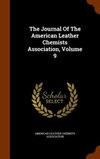基于图像处理技术的区域表面缺陷检测和结壳皮革图像分级
IF 0.5
4区 工程技术
Q4 CHEMISTRY, APPLIED
Journal of The American Leather Chemists Association
Pub Date : 2023-07-03
DOI:10.34314/jalca.v118i7.7856
引用次数: 0
摘要
鞣革行业采用的方法之一是对结皮进行分拣和对齐,以便根据缺陷分布情况进行分级。这种方法一般由官方取样位置上的资深专家手工操作,他们的意见至关重要,因为这直接关系到结皮的销售。专家的意见被认为是稳定的,而且会耗费大量时间。因此,在当前的研究中,提出了一种基于图像处理技术的稳健缺陷检测方法和结皮图像排序,以便在短时间内给出稳定的解决方案。本研究使用了一个定制的皮壳皮革图像数据集,该数据集由 5640 张图像组成。通过在实际图像上使用一种新方法--图像位置分级法(GSIP)--对坐标进行水平和垂直映射,提取了包括颈部、腹部左侧、腹部右侧、中心和臀部等不同区域的划界位置的像素强度,而不是官方采样位置。使用 Canny 边缘检测和滤波器(如拉普拉斯滤波器、中值滤波器、普雷维特滤波器、罗伯茨滤波器、索贝尔滤波器和沙尔滤波器)等图像处理技术,对像素强度进行分组,并使用奈伊夫贝叶斯分类器根据可接受范围内的参数进行分类。分类器证实,与其他图像处理技术相比,采用 canny 边缘检测技术的集合 I - 实际图像和集合 II - 缺陷的准确率为 99.50%。因此,目前的研究证实,基于图像处理技术对结皮图像进行区域表面缺陷检测时,拟议的 GSIP 方法将为检测人员提供额外的工具,对结皮进行分级。本文章由计算机程序翻译,如有差异,请以英文原文为准。
Region Wise Surface Level Defect Detection and Ranking of Crust Leather Images Based on Image Processing Techniques
Sorting and aligning of crust leather for grading on position wise defect distribution is one of the methods adopted in the tanning industry. This method is generally carried out manually by a veteran on official sampling position and their input is critical because it is directly linked to sales of the crust leather. The opinion of the experts is believed to be stable and consumes a good amount of time too. Hence, in the current research a robust defect detection method and ranking of crust leather images based on image processing techniques is proposed to give a stable solution in a short span of time. A custom-made dataset of crust leather images consisting of 5640 images were used in this study. The pixel intensity has been extracted on demarcated position of various regions including neck, belly left, belly right, center and butt instead of official sampling position through horizontal and vertical mapping of coordinates with a new method Grading Score on Image Position wise (GSIP) on the actual images. The image processing techniques using Canny Edge Detection and filters such as Laplacian, Median, Prewitt, Roberts, Sobel and Scharr were implemented to get the pixel intensity grouped and classified based on parameters within acceptable range using a Naïve Bayes Classifier. The classifier confirms that the accuracy of Set I - Actual Images and Set II - Defects with implementation of canny edge detection over other image processing techniques at 99.50%. Therefore, the current research confirms that the proposed GSIP method would give an additional tool to inspectors while ranking the crust leather based on region wise surface level defect detection of crust leather images based on image processing techniques.
求助全文
通过发布文献求助,成功后即可免费获取论文全文。
去求助
来源期刊

Journal of The American Leather Chemists Association
工程技术-材料科学:纺织
CiteScore
1.30
自引率
33.30%
发文量
29
审稿时长
3 months
期刊介绍:
The Journal of the American Leather Chemists Association publishes manuscripts on all aspects of leather science, engineering, technology, and economics, and will consider related subjects that address concerns of the industry. Examples: hide/skin quality or utilization, leather production methods/equipment, tanning materials/leather chemicals, new and improved leathers, collagen studies, leather by-products, impacts of changes in leather products industries, process efficiency, sustainability, regulatory, safety, environmental, tannery waste management and industry economics.
 求助内容:
求助内容: 应助结果提醒方式:
应助结果提醒方式:


